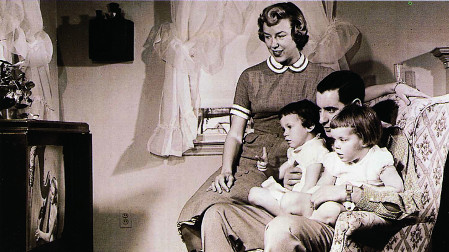What Are We Going to do With TV?
“What are we going to do with TV?” I am willing to bet that there are media companies all over the world asking this question. Terrestrial television broadcasters are caught in a pickle. They see the growth of broadband connectivity and wireless services growing in strength and capacity at a rate that may make them obsolete in the very foreseeable future. There is of course, the Next Gen Television (ATSC 3.0) standard with its promises of expanded capacity, capabilities, mobility and seamless integration with the internet of things.
But, it is a tough gamble. While traditional OTA broadcasting doesn’t garner the mass audiences it did in its heyday, it still generates a considerable amount of revenue for station owners and provides local services to communities. NGT has great promise but its success is far from assured and it will take a leap of faith for the early adopter to make the move. So it is no wonder the question is being asked “What are we going to do with TV?

Here’s the funny thing, a colleague of mine (Trista Peitzman) recently shared with me a Reader’s Digest article titled “What are we going to do with TV?” by Millard C. Faught. It appeared in the November 1950 issue and was condensed from the original article “TV: An Interim Summing-Up” from the August 26, 1950 issue of The Saturday Review of Literature. Doing a little digging, I was able to locate the original article and it was a fascinating read. I thought I would go through it and share some of the amazing parallels and predictions that were made.
TELEVISION’S INFLUENCE
The paragraph in the original article is a quote attributed to an unnamed observer in reference to television, stating the “The big problem with television is that it’s hard to lie about it fast enough to keep up with the truth.” I am not sure if this is the birth of “fake news” but it seems interesting to me that in 1950, there was great concern about the impact of television. The author notes that the influence of television on the daily lives of millions of Americans far exceeds the “sundered atom.” There is even concern expressed regarding television’s potential impact outside of the home in portable and mobile forms. Concerns are expressed about television sets in cars and mention of a couple of “successful” experimental installation of sets in a bus in California and a transcontinental airliner.
The societal and business impacts are further described in the form of a New York laundry’s complaint that TV owners are dirtying up to 40 percent fewer dress shirts, and kids cajoling their parents into purchasing “TV horse-opera” gear to the tune of $200 million. According to the inflation calculator on www.saving.org that is a little over $2 billion in 2017 dollars. That is a lot of Hopalong Cassidy paraphernalia. Even in the light of an impending war, in the first six months of 1950 there were upwards of three million sets sold at an average price of $300 ($3,069.00 in 2017 dollars). All of this impact was from the 107 VHF television stations that were on the air by mid-1950.
In 1948, the FCC had frozen the issuance of new construction permits while it sorted out where to find the additional spectrum needed to accommodate the tremendous demand for more television channels. The UHF band was already being looked at but there was the concern over how to protect the investment millions of consumers had made in VHF-only televisions. In 1950, a 21 year-old Gordon Moore had just received his B.S. degree in chemistry from UC Berkeley and was a decade and half away from the original theory that in 1975 became “Moore’s Law.” The televisions of the time were significant investments that had life expectancies many times greater than the two-year product replacement cycle we see now. There were other challenges noted such as the inclusion of color with three separate potential systems being argued by their proponents.
WHAT’S IT GOOD FOR?
The article also asked “What is television useful for?” According to Faught, while there may be hundreds of uses, they have been obscured by the belief that television is the “greatest advertising medium ever, and that’s that.” I don’t think that in 1950 this claim could be disputed, but in 2017 I think there may be other contenders that utilize television’s capabilities along with the interactive components of other technologies. But as I pointed out at the beginning of this article, the original piece was brought to my attention by a member of the educational staff here at Iowa Public Television.
Get the TV Tech Newsletter
The professional video industry's #1 source for news, trends and product and tech information. Sign up below.
Educators here in Iowa were quick to recognize the value of television as a method of providing distance learning. Remember, in 1950 there were 107 television stations on the air and one of those was WOI-TV then licensed to Iowa State College (now Iowa State University) and in addition to commercial programming from ABC, CBS and NBC, the station aired academic and educational programming that continued until 1959 when the Des Moines Public School signed on KDPS-TV, (now KDIN), the primary station in the Iowa Public Television Network. An interesting sidelight that I came upon while doing some online research for this article is that the funding for starting WOI in 1950 came from excess grant money that Iowa State received for work on the Manhattan Project. If that is accurate, then WOI-TV is sort of an unplanned chain reaction from the previously mentioned “sundered atom.”
“Via television it is possible to project almost any sort of educational subject matter—lectures, exhibits, experiments, demonstrations and even field trips and examinations—outside the classroom.” This is a quote from George Jennings who at the time was the director of the Radio Council of the Chicago Public Schools—a pretty bold vision for a technology in an early stage of development. At IPTV we have certainly seen the evolution of this type of educational content with improvements such as high definition adding to the quality of the material presented. Looking forward to Next Gen TV, couple immersive concepts like virtual reality or augmented reality with the interactivity that is enabled by the hybrid return channel and the ideas expressed in the 1950 article become even more compelling and impactful. Imagine a large class being able to explore the space, or ocean depths or the inside of a human heart through immersive images and sound and being able to interact with the material and each other in real time.

While this is a noble vision, there is the reality of how do we pay for it? So the question then and now is not “What is television useful for?” but “What uses of television can we pay for, and how?” Then and now the monetary engine that drives television is advertising revenue and that revenue comes from audience share and ratings. But even that engine is starting to show its weakness. Advertisers are starting to move their dollars away from the traditional one-way streams to the more narrowly focused broadband services that allow for a more targeted spend with measurable metrics for effectiveness. While not a selling point for the consumers, one of the capabilities that gets the most notice from broadcasters considering Next Gen TV is the capability to better target and measure the audience. I suspect that some of these same performance measuring technologies may have applications in measuring the effectiveness of an educational program as well as providing some guidance regarding what additional information or programs the student is interested in.
DIFFERENT TIMES, SAME VIEWS?
Different things in this article will resonate with different people depending on their focus and interests. One of the items that resonated with Trista when she discussed the Reader’s Digest version was the statistic that according to a “recent survey in Stamford, Conn,” children are “’mesmerically’ glued to the television screen for as much as twenty-seven hours per week.” According to my colleague Trista, the most recent data suggests that children currently spend about 28 hours per week with a screen. I am still pondering what this small increase means in a universe with hundreds of streaming channels and internet connectivity. In 1950, Stamford could not really be considered typical when it came to television, being that it was serviced by as many as eight television stations from the New York City area and since on an average television, stations were on the air for approximately 70 hours a week.
This meant that children were watching more than 33 percent of the time the stations were on and the concern according to the article, was that “never has a generation of impressionable youngsters been instructed on the best ways to commit murder, mayhem, and bank robbery as they have of late on television.” What this seems to indicate is that the screen is the primary draw for children and the content is secondary. I wonder if in Mr. Faught’s view, for children, a bad television program is more interesting and engaging than a good book.
One of the more amusing parts of this article was in regards to how to fund television. The author compares the costs of creating content in Hollywood with the costs of creating content for television. Since television is “sort of like a movie in your home,” it costs “sort of like a movie” to produce. The pot boiler movie in the day might cost $2,000 per minute and the really good films were in the $15,000 to $30,000 per minute range. According to a New York Times article, only six of the television stations on the air in 1949 made a profit. Based on a linear extrapolation of the financial numbers from 1949, the cost of operating 1,000 television stations nationally would be $1,740,500,000 (almost $18 billion in 2017 dollars) and would require the sale of goods advertised to be $80 billion (or about $820 billion in 2017 dollars). Clearly based on that 1950’s evidence along with the pending potential Korean War, television broadcasters should have shut down and cut their losses because as the author concludes, television “cannot be sponsored by advertising.”
One of the solutions according to the article is to find ways to collect fees for premium programming from the viewers—no kidding, in this article, there was already talk about pay-per-view programming. In the Chicago area in 1946, Zenith began test transmissions of a system called “Phonevision,” at the time quite an ingenious system whereby the video and audio were scrambled and then transmitted using an experimental television station. A set-top box with a tuner and a telephone interface was installed at the consumers home and when they wanted to watch a premium program, they called in using their home phone and the phone line was used to send the descrambling key to the Phonevision box and the charge for the service would appear on the consumer’s phone bill. The belief was that people would pay $1.00 ($10.00 in 2017) to watch theatrical releases on their televisions at home.
Although a clever technology and idea for the day, there were some clear problems with the concept; not the least of which was the quality of the broadcast image compared to the film when viewed in a theater. There was also the issue of color, which was still a few years off in 1950. I expect if the project had really picked up steam there would also have been some concerns expressed as to how many people watched in one location at the same time before it was viewed as a “public showing.” But if you look at the consolidation that is happening in the media industry now, while the technology is more sophisticated, the basic idea is still pretty much the same. What has been added is the on-demand feature for the films.
So, what are we going to do with television?
Bill Hayes is the director of engineering for Iowa Public Television. He can be reached via TV Technology.
Bill Hayes is the former director of engineering and technology for Iowa PBS and has been at the forefront of broadcast TV technology for more than 40 years. He’s a former president of IEEE’s Broadcast Technology Society, is a Partnership Board Member of the International Broadcasting Convention (IBC) and has contributed extensively to SMPTE and ATSC. He is a recipient of Future's 2021 Tech Leadership Award and SMPTE Fellow.

